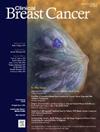乳房切除术后疼痛综合征的非药物干预--文献系统性回顾。
IF 2.9
3区 医学
Q2 ONCOLOGY
引用次数: 0
摘要
目的:有关乳房切除术后PMPS或CP的非药物干预(NPI)的文献很少,且未得到充分评估,因此我们进行了此次系统性综述,以探索当前治疗方案的全景:方法:进行系统性综述,评估有关治疗 PMPS 的非药物疗法的现有证据。我们查阅了以下数据库:PubMed-MEDLINE、Embase 和 Ovid(包括 Cochrane 临床研究数据库),并使用以下检索词:CP、乳房切除术和 PMPS,并根据所使用的数据库对术语进行了调整。我们纳入了包括病例报告在内的观察性研究、横断面研究、队列研究以及包含治疗 PMPS 的 NPI 的临床试验(随机或非随机):结果:共发现 1061 条记录。在剔除重复记录后,筛选出 863 条符合条件的记录。根据我们的标准,共排除了 717 条记录,检索了 138 条记录,评估了 117 条全文记录。最后,共纳入 30 项研究:7 项病例系列研究、1 项横断面研究、2 项队列研究、1 项病例对照研究、5 项非随机临床试验、10 项随机临床试验 (RCT)、1 项定性研究和 3 项系统性文献综述(包括 2 项元分析):讨论:研究结果表明,患者对某些 NPI 有很大的反应。在手术干预方面,自体脂肪移植和淋巴结移植在提高生活质量和降低疼痛评分方面对患者的益处最大。脉冲射频在能量相关程序方面的证据质量最高。在物理治疗干预中,经皮神经电刺激和干针疗法显示出最大的益处。最后,虚拟现实在教育干预方面显示出最大的益处。本文章由计算机程序翻译,如有差异,请以英文原文为准。
Nonpharmacological Interventions for Postmastectomy Pain Syndrome—A Systematic Review of the Literature
Objective
Literature regarding nonpharmacological interventions (NPI) for PMPS or CP after mastectomy is scarce and not fully appraised, therefore we conducted this systematic review to explore the current panorama of treatment options.
Methods
A systematic review to assess the existing evidence regarding nonpharmacological approaches for PMPS. We reviewed the following databases: PubMed—MEDLINE, Embase, and Ovid (including the Cochrane Database for Clinical studies) using the following search terms: CP, mastectomy, and PMPS, and adjusted the terms depending on the database used. We included observational studies including case reports, cross sectional studies, cohort studies, and clinical trials (randomized or not) that included a NPI to treat PMPS.
Results
Total 1061 records were identified. After duplicate elimination, 863 records were screened for eligibility. A total of 717 records were excluded using our criteria, 138 records were sought for retrieval, and 117 full text records were assessed. Finally, 30 studies were included: seven case series, one cross-sectional study, two cohort studies, one case-control study, five nonrandomized clinical trials, ten randomized clinical trials (RCT), one qualitative study, and three systematic reviews of the literature, including two meta analyses, were included.
Discussion
Findings suggest that there is a great response of patients to some NPI. Regarding surgical interventions, autologous fat grafting and lymph node transplantation showed to have the greatest benefit for patients in terms of quality of life and reduced pain scores. Pulsed radiofrequency demonstrated the highest quality of evidence for energy related procedures. Within the physical therapy interventions, transcutaneous electric nerve stimulation and dry needling showed the greatest benefit. Finally, virtual reality demonstrated the greatest benefit in educational interventions.
求助全文
通过发布文献求助,成功后即可免费获取论文全文。
去求助
来源期刊

Clinical breast cancer
医学-肿瘤学
CiteScore
5.40
自引率
3.20%
发文量
174
审稿时长
48 days
期刊介绍:
Clinical Breast Cancer is a peer-reviewed bimonthly journal that publishes original articles describing various aspects of clinical and translational research of breast cancer. Clinical Breast Cancer is devoted to articles on detection, diagnosis, prevention, and treatment of breast cancer. The main emphasis is on recent scientific developments in all areas related to breast cancer. Specific areas of interest include clinical research reports from various therapeutic modalities, cancer genetics, drug sensitivity and resistance, novel imaging, tumor genomics, biomarkers, and chemoprevention strategies.
 求助内容:
求助内容: 应助结果提醒方式:
应助结果提醒方式:


